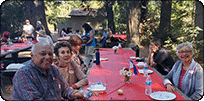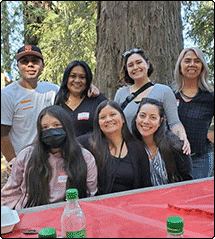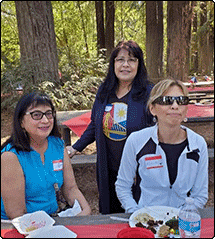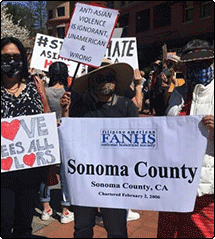







News and Events
Local News
January
Hosted the 2025 San Francisco Bay FANHS Bay Area Consortium Holiday/New Year’s party. The consortium is comprised of the East Bay, Santa Clara, San Francisco, San Mateo, Sonoma, and Vallejo.
May
Sponsored a book talk by Napa Valley writer/poet Eileen Tabios, who read excerpts from her new book “The Balikbayan Artist.” Leny Strobel writes, “The novel breaks out of the confines of the modern/colonial frame and returns us to the wondrous world of myth-making. This is how Story becomes Medicine.” The event was well attended and held at Moonlight Farm in Glen Ellen. The author sold out of all of her books.
July
In partnership with the Japanese American Citizens League/Sonoma County Chapter and the Asian American Pacific Islander Coalition of the North Bay, we held a seminar featuring local activists and had discussions with immigration attorneys including a representative from the Philippine Consulate General in San Francisco. The seminar was held July 26th at the Rohnert Park-Cotati Regional Library.
August
On the 26th FANHS-Sonoma participated in the Rohnert Park Pacific Islander Festival held at the Rohnert Park Community Center. Member volunteers signed up new members and raised funds by selling lumpia and desserts.
September
FANHS will participate in the Windsor Day Parade in Downtown Windsor starting at 10am. Our entry will include 2-vintage cars with members walking. The parade theme is “All Aboard for Imagination.” We want people to imagine “what it was like” when Filipino/American pioneers began residing in Windsor during the 1930’s and 1940’s. We hope you can join as a participant or parade attendee. (see event flyer for more details)
October
FANHS will both have a display with information and, in partnership with Kalingafornia, provide a cultural dance and music performance at the 1st annual Many Moons Festival on October 4th, from 11am-7pm at Ives Park in Sebastopol. The event is a production of AAPIC, Asian Pacific Islander Coalition of the North Bay. Event details can be found here: https://aapicnorthbay.org/event-5996814
November
FANHS will serve as a sponsor at this years’ Sonoma County Finding History Day event on Saturday, November 1st, from 10am-2pm at the Veterans Memorial Building in Santa Rosa. Information about our history will be provided thru tabling and a presentation during the program. (see event flyer for details)
Commission on Human Rights
Through the leadership of Commissioner Elizabeth Escalante, on October 26 the Sonoma County Human Rights Commission passed a Resolution in Recognition of October as Filipino American History Month. Community members who spoke in support of the resolution included Jeannette Anglin, Leo Tacate and Michael Viloria.
National News
Celebrating Filipino American History Month 2025

Seattle, WA — Since 1992, the Filipino American National Historical Society (FANHS) has been celebrating October as Filipino American History Month (FAHM) across the United States. In 2009, the month was first recognized by the U.S. Congress, and in 2015, President Obama hosted the first FAHM celebration at the White House. We are pleased to share the official theme for FAHM 2025: From Quotas to Communities: Filipino American Migration and Movement.
